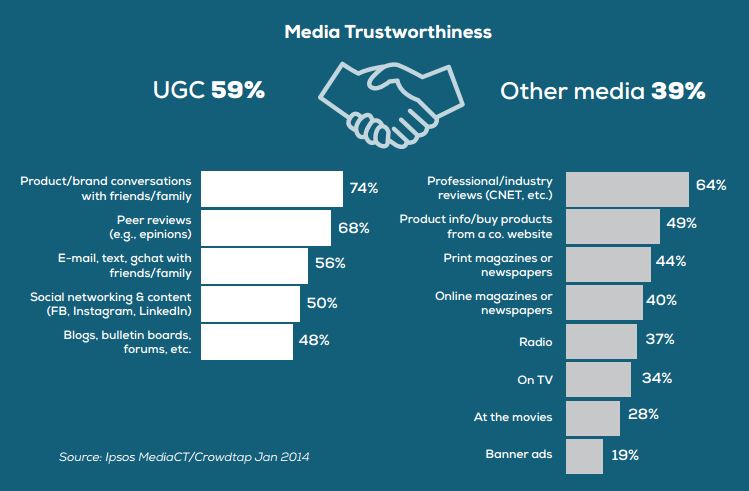
UGC User Generated Content Marketing Explained
UGC user generated content marketing explained delves into the world of user-created content, from its definition and types to the strategies behind successful campaigns. This guide covers everything from the benefits of harnessing user-generated content to the potential challenges and the future of this evolving marketing strategy. Learn how to leverage user voices, build trust, and maximize ROI in the realm of UGC.
We’ll explore the diverse forms of UGC, including reviews, testimonials, photos, and videos, and analyze how these elements contribute to a brand’s authenticity and engagement. The content includes a comparative analysis of UGC against other content types, highlighting its unique strengths and the ways it builds brand loyalty.
Defining UGC Marketing
User-generated content (UGC) marketing is a powerful strategy that leverages content created by consumers rather than by brands. This approach fosters authenticity and trust, as the content originates from a perspective external to the company. It’s a significant shift from traditional advertising, which often feels intrusive. UGC is not just about passively collecting comments; it’s about actively engaging with the content and leveraging it to build a brand’s reputation.UGC marketing differs from other forms of content marketing by its inherent authenticity and relatability.
While professionally created content often feels polished and staged, UGC carries the raw energy of genuine experience. This authenticity resonates strongly with consumers who increasingly value transparency and trust in brands.
Types of User-Generated Content
Various forms of content fall under the umbrella of UGC. Understanding these diverse types allows brands to tailor their strategies effectively.
- Reviews:
- Testimonials:
- Photos and Videos:
- Social Media Posts:
Customer reviews provide valuable insights into product quality and user experience. They can significantly influence purchasing decisions. Positive reviews build trust, while constructive criticism can guide product improvements.
These are personal accounts that highlight a product’s benefits or a company’s positive impact. Testimonials are especially powerful when they come from individuals who represent the target audience.
Visual content, such as user-submitted photos and videos, provides compelling demonstrations of product usage, lifestyle integration, and brand experiences. Images and videos often resonate more emotionally than text-based content.
Social media platforms are a fertile ground for UGC. Brands can actively engage with and share relevant user-generated posts, amplifying their reach and impact. This engagement fosters a sense of community.
Comparison of UGC and Professional Content
The table below highlights key differences between UGC and professionally created content.
| Feature | UGC | Professionally Created Content |
|---|---|---|
| Origin | Created by consumers | Created by the brand or its marketing team |
| Authenticity | Generally perceived as more authentic and relatable | Can sometimes appear staged or less genuine |
| Cost | Potentially lower cost to acquire | Higher cost to produce and manage |
| Engagement | Often fosters higher levels of engagement and interaction | Engagement can be limited depending on content type |
| Trust | Builds trust and credibility through perceived authenticity | Trust can vary depending on the brand’s reputation |
| Examples | Product reviews, customer photos on social media | Brand ads, promotional videos, articles on company blog |
Benefits of UGC Marketing
User-generated content (UGC) is no longer a niche marketing tactic; it’s a powerful force reshaping how brands connect with consumers. This approach leverages the authenticity and credibility of everyday people to drive engagement, build trust, and ultimately, boost sales. The inherent honesty and relatability of UGC often outperform traditional marketing methods, fostering a deeper connection with the target audience.UGC marketing offers a multitude of advantages, transcending the typical limitations of advertising.
By tapping into the collective voices and experiences of customers, brands can craft a more genuine and impactful narrative. This authentic approach resonates with consumers, fostering a sense of community and loyalty.
Building Trust and Credibility
Potential customers are increasingly discerning, seeking out genuine experiences and opinions. UGC provides a powerful platform for building trust and credibility. Reviews, testimonials, and social media posts from satisfied customers offer a glimpse into real-life experiences, reinforcing the brand’s value proposition. This social proof is invaluable in establishing credibility and encouraging potential buyers to take the leap.
Enhancing Brand Authenticity
UGC inherently enhances brand authenticity. Unlike polished marketing materials, UGC comes directly from the heart of the consumer. This authenticity resonates deeply with audiences, particularly those who are savvy enough to spot inauthentic marketing. Authenticity fosters a sense of transparency and relatability, strengthening brand trust and encouraging customer engagement. A brand that showcases genuine customer experiences demonstrates its dedication to its customers, creating a positive feedback loop.
Impact on Brand Engagement and Customer Loyalty
UGC significantly impacts brand engagement and customer loyalty. When customers feel heard and valued, they are more likely to engage with a brand. Active participation through reviews, comments, and social media interactions creates a sense of community. The resulting increased engagement often translates into higher customer retention and loyalty. Positive interactions and engagement foster a sense of belonging and foster a positive brand experience.
Successful Campaigns Leveraging UGC
Numerous brands have successfully implemented UGC campaigns, driving significant results. For example, many fashion brands use customer-generated photos of their products to highlight the versatility of clothing. Similarly, restaurants often showcase user-submitted photos of their food, thereby reinforcing the appeal and taste. These examples highlight the power of UGC to create a vibrant and engaging brand experience.
Measurable Results of UGC Marketing Campaigns
| Metric | Potential Measurement | Example |
|---|---|---|
| Website Traffic | Increase in website visits from social media posts featuring UGC. | A 15% increase in website traffic after a campaign featuring user-generated videos. |
| Social Media Engagement | Likes, shares, comments, and mentions on social media posts. | A 20% increase in average engagement rate on Instagram posts featuring UGC. |
| Sales Conversions | Increase in sales attributed to UGC-driven campaigns. | A 10% increase in sales from customers who interacted with UGC on social media. |
| Customer Loyalty | Customer retention rates and repeat purchases. | A 12% increase in repeat purchases among customers who engaged with UGC. |
“UGC allows brands to build a stronger relationship with their customers, creating a more engaged and loyal community.”
Strategies for Implementing UGC Marketing

User-generated content (UGC) is a powerful tool for building trust and authenticity in your brand. By harnessing the voices of your customers, you can create a more engaging and compelling marketing strategy. This approach goes beyond traditional advertising, allowing your audience to become active participants in your brand story. This section dives deep into practical strategies for implementing UGC marketing effectively.Implementing a successful UGC marketing strategy requires a well-defined plan.
It’s not just about passively collecting content; it’s about actively encouraging and managing the flow of user-generated material. A strong UGC strategy fosters a sense of community and strengthens customer relationships.
Crafting a Successful UGC Marketing Strategy
A successful UGC marketing strategy starts with a clear understanding of your target audience and brand values. Defining your goals and objectives is paramount. Do you want to increase brand awareness, drive sales, or build a loyal community? Knowing the specific outcomes you seek will guide every step of your campaign. Furthermore, you need to establish clear guidelines for the type of content you want to promote.
This will ensure consistency and maintain brand identity throughout the campaign. Examples include guidelines on appropriate language, imagery, and tone.
Encouraging User Content Creation and Sharing
To cultivate a vibrant UGC ecosystem, you need to inspire and motivate users to create and share content. This involves offering incentives, creating engaging prompts, and fostering a sense of community. Incentivizing user participation can take various forms, from contests and giveaways to exclusive access to content or products. Providing a platform for users to easily share their content is also critical.
Make it simple for them to upload, tag, and share their creations.
Engagement Tactics for Promoting UGC
Various engagement tactics can stimulate user participation and encourage content sharing. Running contests and challenges that encourage creative expression is a powerful strategy. Contests provide a structured framework for participation, while challenges allow for more open-ended creative exploration. Another excellent tactic is to partner with influencers or social media personalities to amplify user-generated content. Collaborating with influencers can significantly broaden your reach and credibility.
You can also feature user-generated content in your social media feeds, email newsletters, or website. Presenting user-generated content prominently will highlight its value and encourage others to participate.
Identifying and Managing UGC Effectively
Identifying and managing user-generated content efficiently is crucial for maintaining brand consistency and addressing potential issues. Establish a clear process for reviewing and approving user-generated content to ensure it aligns with your brand guidelines. Use specific criteria to evaluate the quality and relevance of submissions. You need to address negative or potentially harmful content promptly and appropriately, using a consistent approach that aligns with your brand’s values.
Furthermore, use appropriate tools to monitor the sentiment surrounding your brand to proactively identify and address potential issues.
Leveraging Social Listening Tools for Tracking and Responding to UGC
Social listening tools provide valuable insights into the conversation surrounding your brand and allow you to track user-generated content. They enable you to identify trending topics, emerging conversations, and potential issues in real-time. By monitoring social media platforms, forums, and other online communities, you can gain valuable insights into customer perceptions and feedback. This data can help you understand what resonates with your audience and adapt your strategies accordingly.
Monitoring conversations also allows you to identify and respond to negative feedback promptly and constructively.
UGC Marketing Platforms: A Comparative Overview
| Platform | Key Features |
|---|---|
| Visual-centric platform; strong emphasis on visual content, user-generated photos, and videos; Stories and Reels provide excellent opportunities for showcasing UGC. | |
| TikTok | Short-form video platform; excellent for viral content and challenges; user-generated content can go viral rapidly. |
| Real-time platform; ideal for quick responses and engagement; user-generated reviews and opinions can spread quickly. | |
| Wide reach; allows for contests, polls, and other interactive features to encourage UGC. | |
| YouTube | Video-centric platform; user-generated reviews, tutorials, and creative content can gain significant traction. |
| Community-driven platform; UGC often takes the form of discussions, reviews, and memes; allows for targeted engagement. |
Measuring the Impact of UGC Marketing
Understanding the effectiveness of your user-generated content (UGC) campaigns is crucial for optimizing future strategies and demonstrating their return on investment. Accurate measurement allows you to fine-tune your approach, ensuring your UGC initiatives are not only engaging but also driving tangible results. This involves tracking key performance indicators (KPIs) and analyzing the data to pinpoint what’s working and what needs adjustment.Effective measurement goes beyond simply counting likes and shares.
It requires a holistic approach that considers the entire customer journey and the impact UGC has on various business objectives. By analyzing data meticulously, businesses can gain valuable insights into how UGC influences brand perception, drives sales, and fosters customer loyalty. This deep dive into measuring UGC impact will help you establish clear metrics and interpret the results accurately.
Methods for Assessing UGC Campaign Effectiveness
Various methods exist for assessing the effectiveness of UGC marketing campaigns. These methods often involve combining quantitative and qualitative data analysis. Analyzing website traffic patterns, social media engagement, and sales data provides valuable insights into campaign performance. Furthermore, gathering feedback through surveys or focus groups allows for a deeper understanding of consumer perception and brand sentiment.
Key Metrics for Tracking and Analysis
Several key metrics are essential for tracking and analyzing the impact of UGC campaigns. These metrics offer a comprehensive view of the campaign’s performance across different platforms and touchpoints. Tracking website traffic, particularly from social media channels, is crucial. This data can reveal which UGC pieces are most effective in driving visitors to your website. Conversion rates are another essential metric, as they indicate the percentage of website visitors who complete desired actions, such as making a purchase or filling out a form.
Closely monitoring brand mentions and sentiment associated with UGC is also critical. Positive mentions highlight the success of the campaign in building a positive brand image, while negative feedback provides opportunities for improvement.
Measuring the ROI of UGC Marketing Initiatives
Calculating the return on investment (ROI) of UGC marketing requires careful consideration of the campaign’s objectives and associated costs. The ROI can be determined by evaluating the revenue generated or other positive business outcomes directly attributable to the campaign. For instance, if a campaign results in a significant increase in sales, the revenue generated can be compared to the campaign’s expenses to calculate the ROI.
Furthermore, quantifying the increase in brand awareness, customer engagement, or positive brand sentiment can also provide a more holistic view of the campaign’s ROI.
Examples of Successful Strategies for Tracking UGC Performance
Several successful strategies exist for tracking UGC performance. A common approach involves creating dedicated landing pages for UGC campaigns. This allows for precise tracking of website traffic originating from the campaign. Tracking unique hashtags or specific campaign codes associated with UGC content can further refine the analysis. For example, using unique hashtags or campaign codes allows you to identify and measure the effectiveness of individual pieces of UGC.
User-generated content (UGC) marketing is all about harnessing the power of everyday people to promote your brand. It’s a fantastic way to build trust and authenticity. Think about how to leverage that same kind of trust with micro-influencers to boost your brand recognition. A great starting point is exploring how to grow your brand with micro influencer marketing here.
Ultimately, UGC remains a vital component of any effective marketing strategy, as it often resonates more authentically with target audiences.
Table Categorizing Metrics for Measuring Different Types of UGC
| Type of UGC | Website Traffic | Conversion Rates | Brand Mentions | Other Metrics |
|---|---|---|---|---|
| Reviews | High | Medium-High | High | Customer satisfaction scores, product ratings |
| Social Media Posts | Medium | Low-Medium | High | Engagement rate, reach, impressions |
| Videos | High | Medium | Medium-High | Video views, shares, comments |
| Photos | Medium | Low-Medium | Medium | Likes, shares, comments |
Challenges and Considerations
User-generated content (UGC) marketing offers significant advantages, but it’s crucial to acknowledge the potential pitfalls. Effective UGC strategies must address challenges head-on to maximize positive impact and minimize reputational risks. This section explores the key obstacles and best practices for navigating the complexities of UGC marketing.
Potential Challenges and Limitations
UGC marketing isn’t a flawless solution. Its reliance on user-generated content introduces inherent unpredictability. Quality control is paramount, and brands need to be prepared for a range of content, including negative reviews, irrelevant posts, or even content that violates brand guidelines. Furthermore, managing the sheer volume of content can be overwhelming, demanding sophisticated tools and strategies to filter, curate, and respond effectively.
Maintaining brand consistency across diverse user-generated content can be a significant challenge, especially if users interpret brand guidelines differently.
Addressing Negative Reviews and Inappropriate Content
Negative reviews and inappropriate content are unavoidable in any UGC campaign. A proactive approach is essential. Responding to negative reviews constructively demonstrates a commitment to customer satisfaction. This involves acknowledging the user’s concerns, offering a sincere apology (if warranted), and outlining steps to resolve the issue. If the issue is more systemic, brands should use the feedback to identify and address underlying problems within their products or services.
Understanding user-generated content (UGC) marketing is key for any business looking to connect with their audience authentically. It’s about leveraging the power of everyday people sharing their experiences with your brand. Finding the right social media management companies, like the ones listed on this helpful resource about best social media management companies for event planners , can make a huge difference in how effectively you use UGC to boost engagement and build trust.
Ultimately, strategic use of UGC can amplify your marketing efforts and create a powerful brand story.
Regarding inappropriate content, establish clear guidelines and a process for swiftly removing or flagging such posts. Automation tools can aid in the rapid removal of violations. Transparency and clear communication about the moderation process build trust.
Strategies to Mitigate Risks and Maintain Brand Reputation
Proactive strategies are key to mitigating risks associated with UGC. Develop clear brand guidelines and expectations upfront. Transparency about the guidelines is vital. Regular communication with users about acceptable content enhances understanding and fosters a positive brand environment. Utilizing moderation tools can efficiently identify and address inappropriate content.
Encouraging positive feedback can help counterbalance negative experiences, thereby improving the overall brand image.
User-generated content (UGC) marketing is all about harnessing the power of everyday people to promote your brand. It’s a fantastic way to build trust and authenticity, which is super important for real estate agencies. Effective strategies for this, like leveraging testimonials and showcasing satisfied clients, can really amplify your reach and create compelling narratives. To manage this effectively, a reliable social media management service, like the ones offered by reliable social media management for real estate agencies , is key.
Ultimately, well-executed UGC campaigns can lead to increased engagement and brand loyalty, making them a powerful tool for any real estate business.
Importance of Legal and Ethical Considerations
Legal and ethical considerations are paramount in UGC marketing. Ensure compliance with relevant regulations, such as data privacy laws. Obtain explicit consent from users before using their content. Clearly define the terms of use for user-generated content. Refrain from using content that infringes on intellectual property rights or violates copyright laws.
Adhere to ethical guidelines to ensure fair treatment of users and maintain brand integrity.
Creating a Clear UGC Policy
A well-defined UGC policy is crucial for managing and governing user-generated content. This policy should Artikel acceptable content, prohibited content, and the process for handling complaints and violations. It should also specify the rights and responsibilities of both the brand and the user. Transparency is essential to build trust and ensure compliance.
Potential Problems and Corresponding Solutions in UGC Marketing
| Potential Problem | Corresponding Solution |
|---|---|
| Negative or misleading reviews | Promptly respond to negative reviews, offering solutions or further information. Actively solicit positive feedback and testimonials. |
| Inappropriate content (e.g., hate speech, spam) | Establish clear guidelines for acceptable content and implement automated tools to flag violations. Have a dedicated team for content moderation. |
| Copyright infringement | Ensure explicit permission for using user-generated content. Develop a process to identify and remove content that violates copyright laws. |
| Data privacy concerns | Adhere to relevant data privacy regulations (e.g., GDPR). Obtain informed consent before collecting and using user data. |
| Managing high volume of UGC | Implement automated tools and processes for content curation, moderation, and review. Employ dedicated personnel for content management. |
Case Studies and Examples
User-generated content (UGC) marketing is no longer a trend; it’s a powerful force driving engagement and brand loyalty. Seeing successful campaigns in action provides invaluable insight into how to effectively leverage UGC. Understanding how brands use UGC, the types of content they employ, and the strategies they deploy, allows us to apply these principles to our own marketing efforts.
Successful UGC Marketing Campaigns
Numerous brands have successfully harnessed the power of UGC. Analyzing their campaigns reveals common threads of success and demonstrates the potential of this approach. Understanding the strategies employed in these campaigns provides actionable insights.
Nike’s “Find Your Greatness” Campaign
Nike’s “Find Your Greatness” campaign is a prime example of a successful UGC campaign. The campaign encouraged users to share their athletic journeys and achievements using the hashtag #FindYourGreatness. This incentivized user-generated content, fostering a sense of community and inspiring others. Nike leveraged a wide variety of UGC, including photos, videos, and testimonials. This diverse content effectively resonated with a broad audience, driving significant brand engagement and positive word-of-mouth.
The campaign showcased how a clear call to action, coupled with a powerful narrative, can amplify the impact of user-generated content.
Airbnb’s Community-Building Strategy, Ugc user generated content marketing explained
Airbnb exemplifies how UGC can build a strong community around a brand. Their platform thrives on user-generated photos and reviews, fostering trust and authenticity among potential guests. The platform encourages users to share experiences and create detailed listings that highlight the unique characteristics of the property. This detailed, high-quality content enhances the credibility of the listings, leading to higher booking conversions.
The key strategy is to facilitate the sharing of authentic experiences, thereby creating a trustworthy environment for potential customers.
Starbucks’ Rewards Program
Starbucks’ rewards program leverages UGC to encourage customer loyalty. The program allows customers to share their experiences and earn rewards, leading to a cycle of engagement and content creation. The platform provides a space for customers to share photos of their beverages, fostering a sense of community and brand affinity. By rewarding customer participation, Starbucks incentivizes the creation of UGC and strengthens their relationship with loyal customers.
Summary of Key Takeaways
| Brand | Campaign Focus | UGC Type | Key Strategy | Outcome |
|---|---|---|---|---|
| Nike | Celebrating athletic journeys | Photos, videos, testimonials | Clear call to action, powerful narrative | Increased brand engagement, positive word-of-mouth |
| Airbnb | Authentic experiences | Detailed property listings, photos | Facilitating sharing of authentic experiences | Increased booking conversions, trust building |
| Starbucks | Customer loyalty | Photos of beverages, reviews | Rewarding customer participation | Stronger customer relationships, increased engagement |
Future Trends in UGC Marketing
User-generated content (UGC) marketing is evolving at a rapid pace, driven by technological advancements and shifting consumer behaviors. The future of UGC hinges on brands’ ability to leverage these changes, understanding the emerging trends and adapting their strategies accordingly. This dynamic landscape demands a proactive approach, focusing on innovative ways to engage audiences and build trust.The future of UGC marketing is not just about collecting more content; it’s about fostering authentic engagement and building meaningful relationships with customers.
This requires brands to understand the nuances of the platforms, the technologies, and the evolving preferences of their target audience. The key is to move beyond simple collection and toward sophisticated strategies that seamlessly integrate UGC into the overall brand narrative.
Emerging Technologies and Platforms
The rise of immersive technologies like virtual reality (VR) and augmented reality (AR) is significantly impacting how consumers interact with brands. These technologies offer exciting opportunities for brands to create interactive experiences that encourage user participation and generate engaging UGC. For example, a fashion retailer could use AR to allow customers to “try on” clothes virtually, generating photos and videos that can be shared across social media.
Similarly, interactive games and quizzes can be designed to prompt users to create and share content, enhancing brand engagement and building a community around the brand.
AI’s Role in UGC Management
Artificial intelligence (AI) is playing an increasingly crucial role in managing and analyzing UGC. AI tools can automatically identify and categorize user-generated content, helping brands track trends, gauge sentiment, and understand customer needs more effectively. AI-powered tools can also be used to personalize user experiences, enabling brands to tailor content strategies to specific user segments. This ability to extract insights from vast amounts of UGC data will become critical for brands to understand customer preferences and refine their offerings.
Evolution of UGC Marketing
UGC marketing has evolved significantly from its initial stages. Initially, brands relied on basic social media platforms to gather user-generated content. However, the increasing sophistication of social media and the emergence of new platforms have led to more advanced strategies. Today, brands are employing sophisticated strategies to leverage UGC in a variety of ways, including targeted campaigns, influencer collaborations, and interactive experiences.
Predicted Future Trends and Their Impact
| Trend | Potential Impact |
|---|---|
| Rise of interactive platforms | Increased engagement and higher-quality content generation. Brands can foster a more dynamic and interactive relationship with their customers, which can be a powerful tool for creating a strong brand identity. |
| AI-powered content moderation and analysis | Improved efficiency in content management and better insights into customer sentiment and trends. This will allow brands to quickly identify and address potential issues, as well as leverage valuable insights to enhance their offerings. |
| Emphasis on authenticity and transparency | Increased consumer trust and stronger brand loyalty. Authenticity is becoming a crucial element of brand building, and brands are increasingly realizing that customers appreciate transparent engagement and authentic interactions. |
| Integration of UGC across the entire customer journey | Improved customer experience and increased conversion rates. Seamlessly integrating UGC throughout the customer journey can build trust, establish a sense of community, and ultimately drive sales. |
Ultimate Conclusion: Ugc User Generated Content Marketing Explained

In conclusion, UGC user generated content marketing explained how to effectively leverage user-generated content to build brand trust, boost engagement, and drive conversions. From defining UGC to understanding its impact, and from implementing successful strategies to addressing potential challenges, this comprehensive guide provides a practical framework for maximizing the power of user-created content. The future of UGC marketing looks bright, and this resource will empower you to navigate the ever-evolving landscape of user-generated content.





